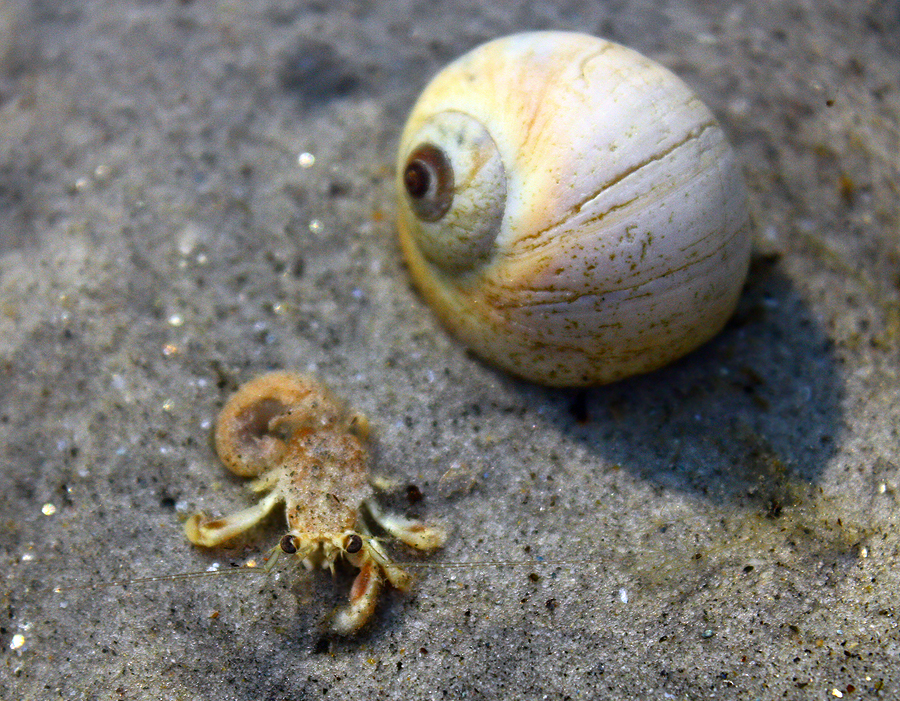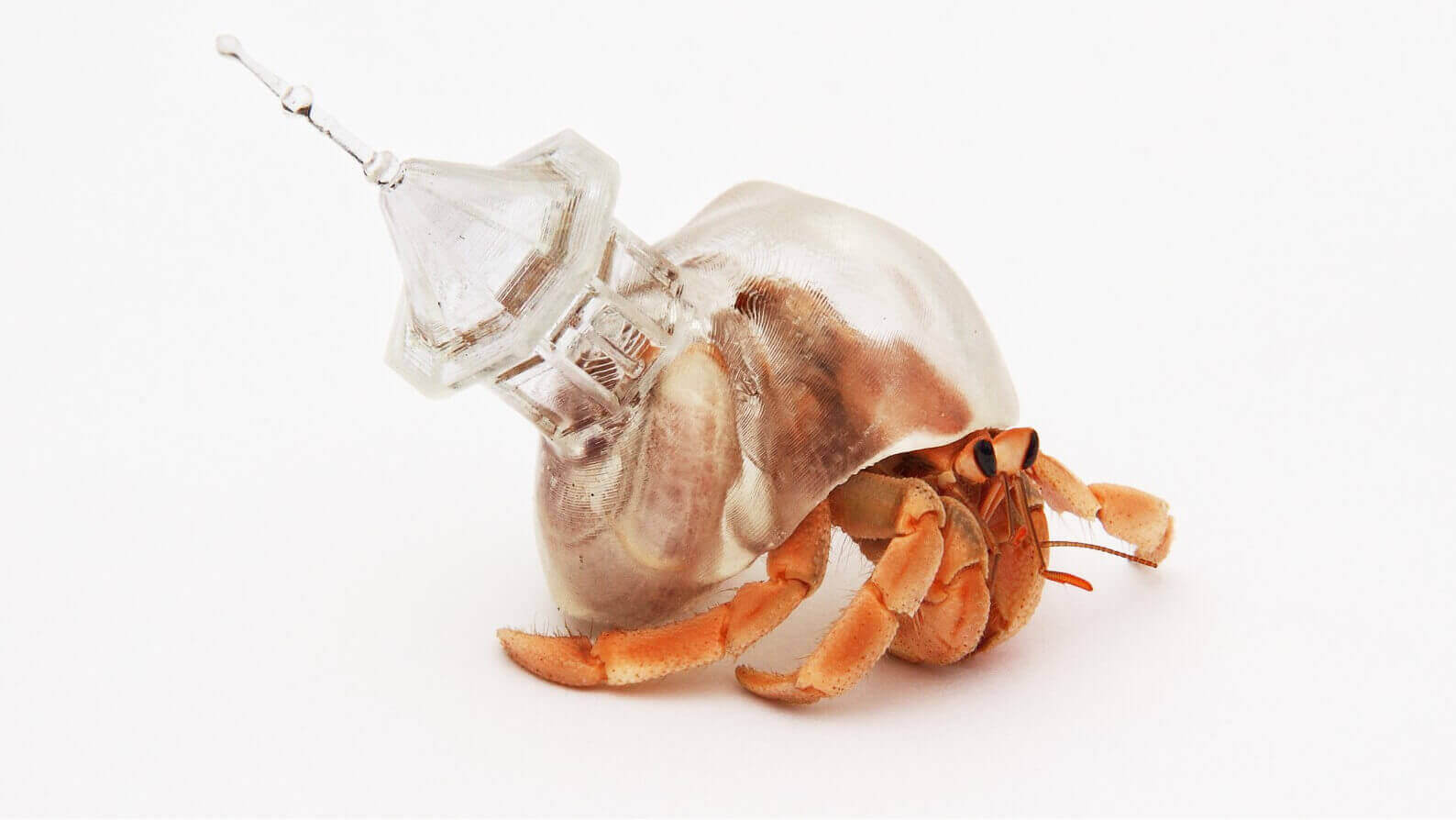Hermit Crab No Shell: The Struggles And Survival Of These Fascinating Creatures
Have you ever wondered what happens when a hermit crab loses its shell? It's like losing your home, right? But here's the twist—these little guys are incredibly resourceful and have some surprising survival strategies up their claws. In this article, we’ll dive deep into the world of hermit crabs without shells, exploring how they adapt, survive, and even thrive in tough situations.
Hermit crabs are fascinating creatures that rely heavily on their shells for protection and survival. But what happens when they find themselves without one? This situation might sound dire, but nature has equipped them with some pretty cool tricks to stay alive. Understanding the challenges they face and how they overcome them can give us a whole new appreciation for these tiny but resilient critters.
Whether you're a marine enthusiast, a pet owner, or just someone curious about the natural world, this article will take you on a journey through the life of hermit crabs when they're shell-less. We’ll cover everything from the science behind their behavior to practical tips for helping them in captivity. So, let's get started!
Read also:Messy Eater Stain Treater The Ultimate Guide To Saving Your Clothes
Why Do Hermit Crabs Need Shells?
Let’s start with the basics. Hermit crabs aren’t born with hard shells like other crustaceans. Instead, they use discarded mollusk shells as their mobile homes. These shells serve two main purposes: protection and moisture retention. Without a shell, a hermit crab is exposed to predators and the harsh environment, making survival much tougher.
But here’s the kicker: hermit crabs don’t just pick any old shell. They’re pretty picky about their homes, choosing shells that fit perfectly to ensure maximum protection. When a hermit crab finds itself without a shell, it’s like being caught in the rain without an umbrella—vulnerable and exposed.
What Happens When a Hermit Crab Loses Its Shell?
When a hermit crab loses its shell, it’s in serious trouble. Their soft abdomens are suddenly exposed to the elements, leaving them at risk of dehydration and predation. But don’t count them out just yet. Hermit crabs have a few tricks up their antennae to help them survive this precarious situation.
For starters, they’ll often seek out temporary shelter, like rocks or coral, to hide from predators. They may also burrow into the sand to stay cool and moist. But the real magic happens when they start looking for a replacement shell. Hermit crabs are incredibly resourceful and will even use unconventional objects like bottles or cans if no suitable shells are available.
Survival Strategies in the Wild
In the wild, hermit crabs have to be quick on their feet—or claws—when it comes to finding a new home. Here are some of the strategies they employ:
- Shell Vacancy Chains: When a hermit crab finds a new shell, it often triggers a chain reaction where multiple crabs line up to trade shells. It’s like a housing market, but with a lot more teamwork.
- Resourcefulness: If no shells are available, hermit crabs will use whatever they can find, from coconut husks to pieces of wood. It’s all about making do with what’s available.
- Camouflage: Some hermit crabs will cover themselves with algae or other debris to blend in with their surroundings and avoid detection by predators.
The Science Behind Shell Selection
Hermit crabs are incredibly selective when it comes to choosing a new shell. They’ll often spend hours inspecting potential homes, testing them for fit and durability. But why are they so picky? The answer lies in the science of their anatomy.
Read also:Marcus Davis Auburn Football The Rising Star In College Football
A hermit crab’s soft abdomen is curled to fit perfectly inside a spiral shell. This unique adaptation allows them to retract fully into their shell for protection. If the shell is too small, it won’t provide adequate protection. If it’s too large, it’ll be cumbersome to carry around. Finding the perfect fit is crucial for their survival.
How Do Hermit Crabs Know Which Shell to Choose?
Hermit crabs rely on a combination of touch and smell to evaluate potential shells. They’ll often tap the shell with their antennae and claws to test its weight and shape. They can also detect chemical signals left by previous occupants, helping them determine if a shell is suitable.
Interestingly, hermit crabs will sometimes carry around a shell that’s too large for them, just in case they need to upgrade quickly. It’s like having a spare tire in the trunk of your car—you never know when you’ll need it.
Hermit Crabs Without Shells in Captivity
If you’re a hermit crab owner, you might have witnessed your pet losing its shell at some point. Don’t panic! There are several things you can do to help them through this challenging time.
First, make sure you have a variety of suitable shells available in different sizes and shapes. Hermit crabs are choosy, so giving them options increases the chances of finding a perfect fit. You should also provide plenty of hiding spots and moist substrate to help them stay comfortable while they search for a new home.
Tips for Helping Hermit Crabs Find a New Shell
- Provide a Variety of Shells: Offer a selection of shells in different sizes and shapes to cater to your crab’s preferences.
- Keep the Environment Moist: Hermit crabs need humidity to survive, so ensure their enclosure has a damp substrate and access to fresh water.
- Minimize Stress: Avoid handling your hermit crab while it’s shell-less, as this can cause additional stress and make it harder for them to find a new home.
The Importance of Shells in Hermit Crab Survival
Shells are more than just a home for hermit crabs—they’re a lifeline. Without one, these creatures are vulnerable to predators, dehydration, and other environmental hazards. That’s why it’s so important to understand the role shells play in their survival.
In the wild, the availability of suitable shells can be a limiting factor for hermit crab populations. Climate change, pollution, and habitat destruction are all contributing to a decline in the number of available shells, making life even tougher for these little guys. By understanding their needs and taking steps to protect their habitats, we can help ensure their survival for generations to come.
Conservation Efforts for Hermit Crabs
Several organizations are working to protect hermit crab habitats and ensure the availability of suitable shells. Efforts include:
- Beach Cleanups: Removing debris and pollution from beaches helps preserve the natural environment where hermit crabs live.
- Shell Donation Programs: Some groups collect and distribute shells to hermit crab owners, providing much-needed resources for these creatures.
- Education and Awareness: Raising awareness about the importance of shells in hermit crab survival is key to protecting these fascinating creatures.
Common Misconceptions About Hermit Crabs
There are several misconceptions about hermit crabs that can lead to misunderstandings about their behavior and needs. Let’s debunk a few of them:
One common myth is that hermit crabs can survive without a shell for extended periods. While they can manage for a short time, prolonged exposure puts them at serious risk. Another misconception is that any old shell will do. As we’ve seen, hermit crabs are incredibly selective about their homes, and providing the right options is crucial for their well-being.
Separating Fact from Fiction
Here are a few more facts to help you better understand hermit crabs:
- Hermit Crabs Aren’t True Crabs: Unlike true crabs, hermit crabs have soft abdomens that require the protection of a shell.
- They Aren’t Solitary Creatures: Despite their name, hermit crabs are social animals that often live in groups in the wild.
- They Can Live for Decades: With proper care, hermit crabs can live for 20 years or more, making them a long-term commitment for pet owners.
Conclusion: Embracing the World of Hermit Crabs
In conclusion, hermit crabs without shells face significant challenges, but their resourcefulness and adaptability make them truly remarkable creatures. By understanding their needs and providing the right environment, we can help ensure their survival both in the wild and in captivity.
So, the next time you see a hermit crab without a shell, remember the incredible journey they’re on to find a new home. And if you’re a hermit crab owner, take the time to provide them with the resources they need to thrive. Together, we can make a difference for these fascinating little critters.
Got any questions or thoughts? Drop a comment below and let’s chat about these amazing creatures. And don’t forget to share this article with your friends who love marine life as much as you do!
Table of Contents
- Hermit Crab No Shell: The Struggles and Survival of These Fascinating Creatures
- Why Do Hermit Crabs Need Shells?
- What Happens When a Hermit Crab Loses Its Shell?
- Survival Strategies in the Wild
- The Science Behind Shell Selection
- How Do Hermit Crabs Know Which Shell to Choose?
- Hermit Crabs Without Shells in Captivity
- Tips for Helping Hermit Crabs Find a New Shell
- The Importance of Shells in Hermit Crab Survival
- Conservation Efforts for Hermit Crabs
- Common Misconceptions About Hermit Crabs
- Separating Fact from Fiction
- Conclusion: Embracing the World of Hermit Crabs
Article Recommendations


